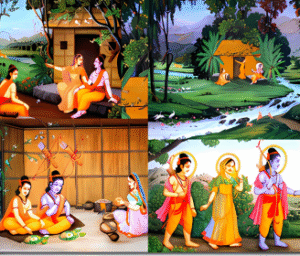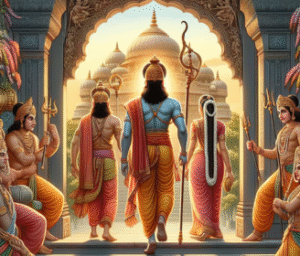
Shree ram
Shree Ram
- Other names - Ramachandra, Raghava, Purushottama, Maryada Purushottama
- Devanagari - राम
- Sanskrit - Rāma
- Venerated in - Ramanandi Sampradaya Sri Vaishnavism Smartism
- Affiliation - Seventh avatar of Vishnu, Brahman, Vaishnavism
- Predecessor - Dasharatha
- Successor - Lava (North Kosala) Kusha (South Kosala)
- Festivals - Rama NavamiVivaha PanchamiDiwaliVijayadashamiVasanthotsavam
Etymology & nomenclature
Rama, also known as Ram, Raman, Ramar, and Ramachandra (Sanskrit: रामचन्द्र), is a revered name in Hinduism. The word “Rama” in Vedic Sanskrit has dual meanings: it can mean “dark” or “black,” and also “pleasing,” “charming,” or “beautiful,” depending on the context. The name appears across Vedic literature, often associated with nobility, divinity, and beauty. Rama is prominently known as:
- Parashurama – the sixth avatar of Vishnu.
Ramachandra – the seventh avatar of Vishnu, hero of the Ramayana.
Balarama – elder brother of Krishna in Hindu, Buddhist, and Jain traditions.
The name “Rama” is widely used in Indian scriptures, including the Rigveda, Upanishads, and other ancient texts, often symbolizing grace, virtue, and divine qualities.
Rama Birth
According to the Ramayana, Rama was born in Ayodhya to King Dasharatha and Queen Kaushalya, on the banks of the Sarayu River. Dasharatha ruled the Kosala kingdom, part of the solar dynasty (Ikshvaku lineage). Rama’s birth is considered a divine incarnation of Vishnu, sent to defeat the demon king Ravana, who was immune to all beings except humans. Jain versions of the Ramayana, like Paumacariya by Vimalasuri (pre-500 CE), also detail Rama’s early life. These retellings predate Buddhist versions such as Buddha-carita and indicate the early prominence of Rama’s story. Though Ayodhya is a key city in Hindu, Buddhist, and Jain traditions, scholars debate whether the modern city is the same as the ancient one described in these texts.

Youth, family & marriage to Sita

According to the Balakanda of the Ramayana, Rama had three brothers—Lakshmana, Bharata, and Shatrughna. All four princes received royal education, including the Vedas, Vedangas, and martial arts. Rama is depicted as virtuous, self-disciplined, and compassionate from a young age. Later texts like Tulsidas’s Ramavali offer more detail on Rama’s youth, portraying him as a reserved and introspective figure, in contrast to the playful nature of Krishna.
Rama’s marriage to Sita took place in Mithilā during a svayamvara hosted by King Janaka. The challenge was to string Shiva’s mighty bow. Rama not only strung the bow but broke it, winning Sita’s hand. During the return journey, Rama was briefly challenged by Parashurama, another avatar of Vishnu, who recognized Rama’s divinity after he strung Vishnu’s bow. Rama then returned to Ayodhya and lived happily with Sita for twelve years.
Exile & war
During his 14-year exile, Lord Rama leaves Kosala, crosses the Yamuna River, settles in Chitrakoot, near the Mandakini River, in the hermitage of Sage Vasishtha. There, he meets the devoted Shabari, who lovingly offers Rama berries she first tastes to ensure their sweetness—a symbol of true devotion. Chitrakoot, located on the border of Uttar Pradesh and Madhya Pradesh, is now a revered Vaishnavite pilgrimage site, filled with Rama temples & linked to ancient sages like Atri.

After ten years of wandering through forests and protecting sages from demons, Rama reaches Panchavati by the Godavari River. Here, the demoness Shurpanakha tries to seduce Rama, but when rejected, she threatens Sita. Lakshmana cuts off her nose and ears, triggering a cycle of revenge. Her brother, Ravana, enraged, sends his uncle Maricha to lure Sita by disguising as a golden deer. Sita is then kidnapped by Ravana and taken to Lanka (modern-day Sri Lanka).
Rama and Lakshmana team up with Sugriva and Hanuman, forming a monkey army to rescue Sita. In a fierce battle, Rama defeats Ravana, rescues Sita, and returns triumphantly to Ayodhya.
Post war life
Rama’s victorious return to Ayodhya marked a grand celebration known as Rama Pattabhisheka (coronation). His reign, called Rama Rajya, is remembered as a time of justice, peace, and prosperity. According to tradition, people lit diyas (lamps) to welcome him home, which is why Diwali is celebrated as the festival of Rama’s return. However, post-coronation, rumors questioned Sita’s purity, claiming she may have gone with Ravana willingly.
 To silence the gossip, Rama asked Sita to prove her chastity through an Agni Pariksha (trial by fire), which she passed. The couple lived together and had twin sons, Lava and Kusha. In later versions of the Ramayana, the story turns tragic—Sita, heartbroken by Rama’s lack of trust, leaves or dies, becoming a symbol of virtue. Overwhelmed with grief, Rama drowns himself, later ascending as a divine form of Vishnu—as depicted in the Burmese Thiri Rama tradition.
To silence the gossip, Rama asked Sita to prove her chastity through an Agni Pariksha (trial by fire), which she passed. The couple lived together and had twin sons, Lava and Kusha. In later versions of the Ramayana, the story turns tragic—Sita, heartbroken by Rama’s lack of trust, leaves or dies, becoming a symbol of virtue. Overwhelmed with grief, Rama drowns himself, later ascending as a divine form of Vishnu—as depicted in the Burmese Thiri Rama tradition.
Literary sources
Ramayana
The primary source of Rama’s life is the Sanskrit epic Ramayana by Sage Valmiki. However, many regional versions have emerged across India, each offering unique interpretations of Rama’s story. Followers of Madhvacharya believe in an even older version called the Mula-Ramayana, considered more authoritative than Valmiki’s. The Ramayana has been retold in nearly every major Indian language, including:
Ramavataram (Kamba Ramayanam) in Tamil by Kambar (12th century)
Saptakanda Ramayana in Assamese by Madhava Kandali (14th century)
Krittivasi Ramayana in Bengali by Krittibas Ojha (15th century)
Ramcharitmanas in Awadhi by Tulsidas (16th century)
Pampa Ramayana, Torave Ramayana, and Sri Ramayana Darshanam in Kannada
Bhavartha Ramayana in Marathi by Sant Eknath (16th century)
Ranganatha Ramayanam and Ramayana Kalpavruksham in Telugu
Vilanka Ramayana in Odia
Adhyatma Ramayanam Kilippattu in Malayalam by Ezhuthachan (16th century)
In Tamil literature
References to the Ramayana appear in early Tamil literature well before the 12th-century Ramavataram (Kamba Ramayanam), indicating that the epic was widely known in Tamil regions long before Kambar’s version. Sangam-era texts like Akananuru, Purananuru, and Kalittokai mention key characters and scenes involving Rama, Sita, Ravana (the ten-faced demon), and the monkey army. The Tamil epic Cilappatikaram also describes Rama as an avatar of Vishnu who measured the worlds and destroyed Lanka.
Adhyatma Ramayana
Adhyatma Ramayana is a late medieval Sanskrit text that presents a spiritual and philosophical version of the Ramayana. Found in the latter part of the Brahmanda Purana, it spans around 65 chapters and 4,500 verses. The text blends Bhakti (devotion to Rama) and Shaktism with Advaita Vedanta philosophy. In this version, Rama is portrayed as Brahman—the ultimate metaphysical reality—with his life events symbolizing deeper spiritual truths. The narrative uses Advaita metaphors to encourage self-inquiry and inner realization. Adhyatma Ramayana greatly influenced Tulsidas’s Ramcharitmanas, Bhanubhakta Acharya’s Nepali Ramayana, and was translated into Malayalam by Thunchath Ezhuthachan—laying the foundation of Malayalam literature.
Ramacharitmanas
Ramacharitmanas is a 16th-century Awadhi retelling of the Ramayana by poet-saint Tulsidas. Written in a language widely understood in northern India, it brought Rama’s story to the masses through a Bhakti (devotional) lens. Unlike Valmiki’s Sanskrit Ramayana, Tulsidas’ version emphasizes devotion to a personal god and blends mythology, philosophy, and spiritual teachings. Influenced by the Adhyatma Ramayana, it portrays Rama not just as a heroic figure but as a divine, formless truth (nirguna Brahman) in human form. The text explores moral values, human dilemmas, duties, and ethics, offering both spiritual guidance and emotional comfort. Ramacharitmanas also forms the basis of Ramlila, the dramatic reenactment of Rama’s life staged every autumn. In 2008, UNESCO recognized Ramlila as an Intangible Cultural Heritage of Humanity.
Upanishad
Rama is the central figure in three key Vaishnava Upanishads: Rama Rahasya Upanishad, Rama Tapaniya Upanishad, and Tarasara Upanishad. These texts highlight his divine nature and spiritual importance. In the Rama Rahasya Upanishad, Hanuman proclaims Rama as identical to Brahman, the unchanging supreme reality, and a path to liberation (moksha) and satcitananda (truth-consciousness-bliss). This text also introduces a Tantra element, including Rama-based Bīja mantras. The Rama Tapaniya Upanishad focuses on the Rama mantra: Rama Ramaya Namaha, identifying Rama as the Atman (soul) and Brahman (ultimate reality). The Tarasara Upanishad presents Rama as Paramatman, Narayana, and Purushottama—the supreme cosmic being, eternal and blissful, beyond duality.
Worship & festivals
As part of the Bhakti movement, Lord Rama became the central deity of the Ramanandi Sampradaya, a monastic order founded in the 14th century by poet-saint Ramananda. Now the largest Hindu monastic community, it promoted social equality by accepting followers regardless of caste, gender, or religion—even welcoming Muslims. Ramananda’s disciples included famous Bhakti saints like Kabir, Ravidas, and Bhagat Pipa. Rama is also worshipped as the supreme god in the Niranjani Sampradaya, founded in the 16th century by saint Haridas Niranjani, with devotion centered on Rama and Sita.
Hymns
Popular Prayers and Hymns Dedicated to Lord Rama – A Brief Overview
Here is a list of well-known devotional chants, mantras, and hymns dedicated to Lord Rama, widely recited across India:
Jai Shri Ram – A popular greeting and salutation in North India honoring Lord Rama.
Jai Siya Ram – A greeting invoking both Sita and Rama.
Siyavar Ramchandraji Ki Jai – A chant glorifying Rama as the husband of Sita.
Sita-Ram Maha-Mantra –
Sita Ram Sita Ram Sita Ram Jai Sita Ram (Repeated in a meditative loop).Hare Rama Rama Rama, Sita Rama Rama Rama – A mantra blending devotion to both Sita and Rama.
Classical Hymns from Ananda Ramayana:
Ramashatanamastotra – Lists 108 names of Rama (from Yaga Kanda).
Ramastotram – A prayer found in Vilasa Kanda.
Ramaraksha Mahamantra – A powerful protective chant (Janma Kanda).
Ramasahasranamastotra – Recites 1,000 names of Rama (Rajya Kanda).
Rama Kavacha – A protective hymn (Manohar Kanda).
Famous Devotional Songs:
Vinaya Patrika – Includes the famous prayer Shri Ramachandra Kripalu Bhajuman, composed by Tulsidas.
Janaki Mangal – A hymn celebrating the marriage of Sita and Rama.
Thumak Chalat Ram Chandra – Describes young Rama’s divine charm.
Hare Rama Hare Krishna Mantra – Hare Rama Hare Rama, Rama Rama Hare Hare Hare Krishna Hare Krishna, Krishna Krishna Hare Hare (from the Kali-Santarana Upanishad).
Rama & festivals
Rama Navami
Rama Navami is a major Hindu spring festival celebrating the birth of Lord Rama. It falls on the ninth day of the bright half of the Chaitra month, typically in March or April. As part of the spring Navratri, the festival holds deep spiritual and cultural significance.
Devotees celebrate by reading Ramayana stories at home or in temples, performing bhajans, kirtans, aarti, and puja. Many observe fasting (vrata), take ritual dips in rivers, and engage in charity and community meals. The day is also seen as a time for moral reflection and devotion.Key celebrations occur in places like Ayodhya, Sitamarhi, Janakpur (Nepal), Bhadrachalam, Vontimitta, Rameswaram, and the Kodandarama Temple. Colorful Rathayatras (chariot processions) featuring Rama, Sita, Lakshmana, and Hanuman are held in various regions.
Ramlila and Dussehra
Rama’s life is celebrated every year through Ramlila, a traditional dramatic reenactment of the Ramayana or Ramcharitmanas, performed during the autumn festival of Navratri. These performances culminate on Dussehra (Vijayadashami) with the burning of giant effigies of Ravana, symbolizing the victory of good over evil, often accompanied by fireworks and public celebrations.
Ramlila is staged in thousands of locations across India and has been recognized by UNESCO as an Intangible Cultural Heritage of Humanity (2008). It is especially prominent in historic cities like Ayodhya, Varanasi, Vrindavan, Almora, Satna, and Madhubani. The tradition has also spread across Southeast Asia, influencing cultural performances in Bali (Indonesia), Myanmar, Cambodia, and Thailand.
Diwali
In many parts of India, Diwali is celebrated to mark Rama’s return to Ayodhya and his coronation, symbolizing the victory of light over darkness. Known as the Festival of Lights, it commemorates the joyous welcome Rama received, with homes lit by diyas (lamps).Diwali is also celebrated globally. In Guyana, it is a national holiday observed with great enthusiasm, with government officials often joining public festivities.
Different communities across India associate Diwali with various legends. For instance, some celebrate it as Krishna’s victory over the demon Narakasura, similar to how Vijayadashami honors Rama’s triumph over Ravana.
Vasanthotsavam
Vasanthotsavam is an annual festival celebrated in Tirumala to mark the arrival of spring. The main ritual, Snapana Thirumanjanam (holy bathing), is performed on all three days for the utsava murthy (festival deity) and his consorts. On the third day, the abhishekam includes the idols of Rama, Sita, Lakshmana, Hanuman, Krishna, and Rukmini. Each evening, a grand procession of these consecrated idols is held.
Rama Temples
Temples dedicated to Lord Rama are widespread across India and in regions with Indian diaspora communities. Most Rama temples feature idols of Rama alongside his wife Sita and brother Lakshmana, with Hanuman often present nearby or within the temple premises.
While early Rama temples were built by the 5th century (as indicated by copper plate inscriptions), few have survived. The oldest surviving temple is the Rajiva-locana Temple near Raipur in Rajim, Chhattisgarh. Located on the banks of the Mahanadi River, it is part of a Vishnu temple complex, originally built in the 7th century and later restored around 1145 CE. The temple continues to be a major pilgrimage site, especially during Rama Navami. Some of the Rama temples include:
- Rama Mandir, Ram Janmabhoomi, Ayodhya, Uttar Pradesh.
- Bhadrachalam Temple, Telangana.
- Kodandarama Temple, Vontimitta, Andhra Pradesh.
- Ramateertham Temple, Andhra Pradesh.
- Ramaswamy Temple, Kumbakonam, Tamil Nadu.
- Kola Valvill Ramar Temple, Tiruvelliyangudi, Tamil Nadu.
- Veeraraghava Swamy Temple, Tiruvallur, Tamil Nadu.
- Adi Jagannatha Perumal Temple, Tamil Nadu.
- Ramchaura Mandir, Bihar.
- Mudikondan Kothandaramar Temple, Tamil Nadu.
- Vijayaraghava Peruma temple, Tamil Nadu.
- Punnainallur Kothandaramar Temple, Tamil Nadu.
- Eri-Katha Ramar Temple, Tamil Nadu.
- Kothandarama Temple, Thillaivilagam, Tamilnadu.
- Kothandaramaswamy Temple, Rameswaram, Tamil Nadu.
- Sri Kothanda Ramaswamy Temple, Tamil Nadu.
- Kothandaramar temple Vaduvur, Tamil Nadu
- Sri Yoga Rama temple, Tamil Nadu.
- Kodandaramaswamy Temple, Tamil Nadu.
- Kothandaramaswami Temple, Nandambakkam, Tamil Nadu.
- Triprayar Sriramaswami Kshetram, Triprayar, Kerala.
- Kalaram Temple, Nashik, Maharashtra.
- Raghunath Temple, Jammu.
- Ram Mandir, Bhubaneswar, Odisha.
- Kodandarama Temple, Chikmagalur, Karnataka.
- Odogaon Raghunath Temple, Odisha.
- Sri Rama Temple, Ramapuram, Kerala.
- Thakurdwara Bhagwan Narainji, Gurdaspur, Punjab
- Vilwadrinatha Temple, Thiruvilwamala, Kerala.
- Gibraltar Hindu Temple, Gibraltar, Britain.
- Perth Ram Temple, Perth, Australia.
